James A. Duke, Ph.D.
See book keywords and concepts |
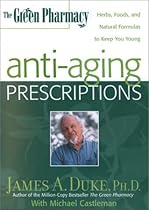 In this experiment, prenatal choline supplementation seemed to prevent the animal equivalent of the memory decline characteristic of senile dementia. How did the choline help? Apparently, by boosting brain levels of acetylcholine, the neurotransmitter that's so important to memory and learning. As its name suggests, choline is a chemical precursor of acetylcholine.
With the abundance of beans in this soup, you can't help getting a healthy dose of choline, a nutrient that may help protect against age-related mental decline. In this experiment, prenatal choline supplementation seemed to prevent the animal equivalent of the memory decline characteristic of senile dementia. How did the choline help? Apparently, by boosting brain levels of acetylcholine, the neurotransmitter that's so important to memory and learning. As its name suggests, choline is a chemical precursor of acetylcholine.
With the abundance of beans in this soup, you can't help getting a healthy dose of choline, a nutrient that may help protect against age-related mental decline. |
Paul Pitchford
See book keywords and concepts |
 However, it is important not to lose sight of the nature of supplementation in relation to food. For instance, can individual, often-synthetic nutrients be made to act like whole food? Is food itself an effective supplement?
How well nutrients work when they are synthetically derived is questionable. Even "natural" vitamin supplements are usually more than 90% synthetic.
Vitamins within plants and living organisms are organized into extremely subtle and complex patterns composed of many other nutrients. Such patterns cannot be duplicated except in a living environment. However, it is important not to lose sight of the nature of supplementation in relation to food. For instance, can individual, often-synthetic nutrients be made to act like whole food? Is food itself an effective supplement?
How well nutrients work when they are synthetically derived is questionable. Even "natural" vitamin supplements are usually more than 90% synthetic.
Vitamins within plants and living organisms are organized into extremely subtle and complex patterns composed of many other nutrients. Such patterns cannot be duplicated except in a living environment. |
Peter Radetsky
See book keywords and concepts |
 All of it — the surgery, the immune boosters, the rotation diets, the vitamin and mineral supplementation, the immunotherapy shots, the avoidance — all of it is aimed at one overriding goal: to help patients better handle the stress visited upon them by the environment.
"Think of a patient as a rain barrel," says Ross. "The water in the barrel is the total load of environmental pollutants that the body must cope with. Then along comes some other source of stress. But the barrel can't hold it, and it pours out. The overflow represents a health problem. All of it — the surgery, the immune boosters, the rotation diets, the vitamin and mineral supplementation, the immunotherapy shots, the avoidance — all of it is aimed at one overriding goal: to help patients better handle the stress visited upon them by the environment.
"Think of a patient as a rain barrel," says Ross. "The water in the barrel is the total load of environmental pollutants that the body must cope with. Then along comes some other source of stress. But the barrel can't hold it, and it pours out. The overflow represents a health problem. |
Paul Pitchford
See book keywords and concepts |
 The supplementation of deficiency is generally more successful in the long term when whole foods are given, not just separate nutrients in a pill. In the event an excessive condition exists, it should be reduced after any weakened, deficient areas have been reinforced. Ironically, as we shall see later, synthetic vitamin "supplements" are sometimes better at reducing excess than supplementing deficiency. The supplementation of deficiency is generally more successful in the long term when whole foods are given, not just separate nutrients in a pill. In the event an excessive condition exists, it should be reduced after any weakened, deficient areas have been reinforced. Ironically, as we shall see later, synthetic vitamin "supplements" are sometimes better at reducing excess than supplementing deficiency. |
Ralph Moss, PhD
See book keywords and concepts |
 Suvimax is an acronym for "Supplementation en Vitamines et Mineraux Antioxydants." This is large and scientifically rigorous study whose main objective is to evaluate a combination of antioxidant vitamins and minerals at nutritional (not high-dose) levels. Almost 13,000 volunteers of both sexes have been signed up in France, and the study will take at least eight years. Studying cancer and heart disease rates are the main points of the project. (112)
Beta-Carotene and Chemotherapy
Does beta-carotene interfere with radiation and chemotherapy, as some oncologists fear?
No, it does not. Suvimax is an acronym for "Supplementation en Vitamines et Mineraux Antioxydants." This is large and scientifically rigorous study whose main objective is to evaluate a combination of antioxidant vitamins and minerals at nutritional (not high-dose) levels. Almost 13,000 volunteers of both sexes have been signed up in France, and the study will take at least eight years. Studying cancer and heart disease rates are the main points of the project. (112)
Beta-Carotene and Chemotherapy
Does beta-carotene interfere with radiation and chemotherapy, as some oncologists fear?
No, it does not. |
| This was a significant recognition by a conservative medical newsletter that vitamin E plays many crucial roles in the body, and that our needs can only be met through supplementation.
Vitamin E and Chemotherapy
Does vitamin E interfere with radiation or chemotherapy? Once again, the short answer is, No. Vtamin E works well with toxic agents, reduces their side effects, increases their potency, and does not interfere with their cancer-killing action.
Adriamycin
As early as 1977, laboratory scientists noted that vitamin E does not interfere with Adriamycin's activity. |
| Thus, supplementation with fairly high amounts is the most prudent course.
Vitamin B6
There is a less expensive way to increase Co Q10 blood levels. In three tests, Co Q10 increased when patients also took a supplement of vitamin B6, or pyridoxine, together with the coenzyme. Folkers and his colleagues concluded that such increases were "clinically important." (452)
Selenium
In addition, it has been shown that a selenium deficiency lowers the level of Co Q10 by about 50 percent in the liver and 15 percent in the hearts of experimental animals. |
| Scientist concluded that "selenium supplementation might thus be beneficial during cytotoxic [ceU-killing] chemotherapy in ovarian cancer patients with low selenium levels." (408,429)
In Poland, scientists studied the effects of antioxidants in women undergoing chemotherapy for ovarian cancer. Each woman was given a daily dose of 200 micrograms of selenium (as well as other antioxidants.) Polish scientists concluded that "the administration of selenium in patients with ovarian cancer undergoing multi-drug chemotherapy is recommended. |
| Their doctors concluded that "oral supplementation with glutamine can significantly decrease the severity of chemotherapy-induced stomatitis, an important cause of morbidity in the treatment of patients with cancer." (415)
In a 1998 study at the Mayo Clinic, Rochester, Minnesota, glutamine had a significant effect on mouth sores. The duration of mouth pain was 4.5 days less in patients who received glutamine supplements, compared to those who just received a placebo. Patients could also start eating regular foods four days earlier. |
James A. Duke, Ph.D.
See book keywords and concepts |
 Studies by Harvard researchers have shown that a diet rich in the nutrient, daily supplementation (100 to 400 IU), or both can reduce heart attack risk by about 40 percent in men and about 25 percent in women.
Most multivitamins contain vitamin E, as do most antioxidant formulas. But if you're like me, you want to know which foods have the best supplies. Vegetable oils rank first, followed by nuts, then whole grains and poppy and sesame seeds. Among fruits and vegetables, the top sources include bell peppers, tomatoes, currants, blueberries, peaches, and plums (prunes). Studies by Harvard researchers have shown that a diet rich in the nutrient, daily supplementation (100 to 400 IU), or both can reduce heart attack risk by about 40 percent in men and about 25 percent in women.
Most multivitamins contain vitamin E, as do most antioxidant formulas. But if you're like me, you want to know which foods have the best supplies. Vegetable oils rank first, followed by nuts, then whole grains and poppy and sesame seeds. Among fruits and vegetables, the top sources include bell peppers, tomatoes, currants, blueberries, peaches, and plums (prunes). |
Paul Pitchford
See book keywords and concepts |
 Supplementation with fish or other animal products may be necessary. Proportions of foods in the daily diet: 45% grains; 35% vegetables; 10% fruit; 5% beans and other legumes; 5% other recommended foods.
Actions: This diet gently reduces the toxic excess that feeds cancer, pathogenic organisms, and degenerative diseases in those who are weak, frail, anemic, cold, or otherwise deficient. Diet A provides balance when using the more powerful treatments (D, E, and F below). Supplementation with fish or other animal products may be necessary. Proportions of foods in the daily diet: 45% grains; 35% vegetables; 10% fruit; 5% beans and other legumes; 5% other recommended foods.
Actions: This diet gently reduces the toxic excess that feeds cancer, pathogenic organisms, and degenerative diseases in those who are weak, frail, anemic, cold, or otherwise deficient. Diet A provides balance when using the more powerful treatments (D, E, and F below). |
Ronald Klatz and Robert Goldman
See book keywords and concepts |
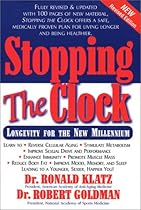 Edmund Chein is a strong supporter of DHEA supplementation and is the founder of the Palm Springs Life Extension Institute. He reported that his patients respond with comments such as "I've never felt this good," and "I can't believe how much weight I've lost." Dr. Chein believes that this weight loss and increase in muscle strength can lead to greater personal independence and freedom as we age.
In a human study conducted in 1988, DHEA was given to five male normal-weight subjects at a dose of 1,600 mg per day. Edmund Chein is a strong supporter of DHEA supplementation and is the founder of the Palm Springs Life Extension Institute. He reported that his patients respond with comments such as "I've never felt this good," and "I can't believe how much weight I've lost." Dr. Chein believes that this weight loss and increase in muscle strength can lead to greater personal independence and freedom as we age.
In a human study conducted in 1988, DHEA was given to five male normal-weight subjects at a dose of 1,600 mg per day. |
Stanley W. Jacob, M.D.
See book keywords and concepts |
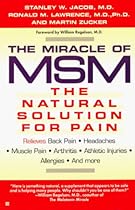 We know from animal studies that a small amount of sulfur from MSM supplementation enters into methionine and cysteine in the body. This utilization could fortify these crucial amino acids.
Do people in a health crisis or recovering from trauma, have an increased demand for more sulfur? We know that a body under physiologic stress has an increased demand for more nutrients. Does that include an increased need for sulfur?
Does the sulfur payload of MSM strengthen the body's ability to carry out critical detoxification and tissue-building activities in times of physical stress? We know from animal studies that a small amount of sulfur from MSM supplementation enters into methionine and cysteine in the body. This utilization could fortify these crucial amino acids.
Do people in a health crisis or recovering from trauma, have an increased demand for more sulfur? We know that a body under physiologic stress has an increased demand for more nutrients. Does that include an increased need for sulfur?
Does the sulfur payload of MSM strengthen the body's ability to carry out critical detoxification and tissue-building activities in times of physical stress? |
Samuel S. Epstein, M.D.
See book keywords and concepts |
 Ultimately, these specific substances may be prescribed for high-risk individuals through dietary supplementation. A wide variety of pharmacological and chemical substances are being investigated, for example, tamoxifen, ibuprofen, and calcium. The goals of the diet and nutrition program are to conduct research in nutritional and molecular regulation, prevention-related epidemiology, clinical trials and nutrition studies; identify and validate cancer-preventive dietary patterns; and — through NCI's information dissemination channels — encourage and change the dietary patterns of the public. Ultimately, these specific substances may be prescribed for high-risk individuals through dietary supplementation. A wide variety of pharmacological and chemical substances are being investigated, for example, tamoxifen, ibuprofen, and calcium. The goals of the diet and nutrition program are to conduct research in nutritional and molecular regulation, prevention-related epidemiology, clinical trials and nutrition studies; identify and validate cancer-preventive dietary patterns; and — through NCI's information dissemination channels — encourage and change the dietary patterns of the public. |
| Deeply concerned by the inadequacy of data submitted in 1967 to the FDA by industry in support of food additive petitions, Commissioner Herbert Ley complained:
Almost half of the food additive petitions originally submitted to the Food and Drug Administration have been incomplete or have not adequately supported the regulation requested and, therefore have required subsequent supplementation, amendment, withdrawal or denial.3
There is substantive evidence that the situation has not improved over the last decade.
Problems related to improper initial design of animal cancer tests include:
1. |
| And "the IGF-1 content of milk is not altered by BST supplementation" on the basis of "more comprehensive [industry] studies,"31 although these studies in fact conclude that "mean IGF-1 levels in the [rBGH] treated animals are always higher than those found in the controls." Excess IGF-1 milk levels were trivialized in comparison with endogenous levels in human saliva and blood by FDA's use of highly speculative and misleading calculations.30
More appropriate calculations should be based on the following considerations and data: Adult humans produce daily about 1. |
Mark Bricklin
See book keywords and concepts |
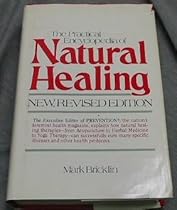 In some cases, it may be impossible to bring nutrition levels up to normal with the usual forms of supplementation. Here, the doctor who understands nutrition can be of great help.
Diverticular Disease and Irritable Bowels
Diverticulosis is the presence in the lower bowel of small herniations, or out-pouchings, of the mucous membrane through weak spots in the muscles surrounding the colon.
These diverticula, as they are known, are not at all uncommon, particularly in older people, and they may not cause any problems. In some cases, it may be impossible to bring nutrition levels up to normal with the usual forms of supplementation. Here, the doctor who understands nutrition can be of great help.
Diverticular Disease and Irritable Bowels
Diverticulosis is the presence in the lower bowel of small herniations, or out-pouchings, of the mucous membrane through weak spots in the muscles surrounding the colon.
These diverticula, as they are known, are not at all uncommon, particularly in older people, and they may not cause any problems. |
| He also advises his patients to increase their calcium supplementation as well.
To get the most out of your vitamin C during hay fever season, take it with citrus bioflavonoids. Studies done on animals have shown that citrus bioflavonoids may favorably alter the body's metabolizing of vitamin C, by raising the concentration of the nutrient in certain tissues and enhancing its bioavailability (American Journal of Clinical Nutrition, August, 1979). |
| Researchers in Israel have found that chromium given to atherosclerotic rabbits produced a 50 percent decrease in their aortic plaques after only 60 days of supplementation. What's more, aortic cholesterol content was also decreased by 50 percent. Rabbits not given the chromium showed no change in either of these values (Atherosclerosis, February, 1982).
You can't remove the aortas of human subjects to evaluate any decrease in plaque formation, as you can with rabbits, but what you can do is measure changes in blood fats believed to help create those circulation-choking plaques. |
| Elwood's study of chromium and see that before supplementation, the 27 subjects had an average ratio of exactly 5, which is too high, reflecting the fact that more than half of the subjects were known to have elevated blood fats. After eight weeks of brewer's yeast, though, the ratio fell from 5 to 3.9. That low ratio is typical of men in their late twenties, which is interesting in light of the fact that the average age of the subjects here was 54! |
| The trial was therefore designed to be a scientifically rigorous one that would clearly demonstrate the results, positive or negative, of B6 supplementation. To accomplish this, the youngsters were divided into two groups. Half received two 100-milligram tablets of vitamin B« daily; the other half took two placebo, or dummy, tablets. Neither doctors nor patients knew who was receiving the B6.
Each day for five months, parents evaluated their children's conditions, using special forms to record wheezing, difficult breathing, coughing, tightness in the chest, and number of asthma attacks. |
Bradley J. Willcox, D. Craig Willcox, and Makoto Suzuki
See book keywords and concepts |
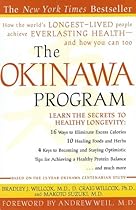 These unfortunate victims usually have a defect in the vitamin B6-dependent pathway for processing homocysteine, and some are cured by supplementation with vitamin B6.
But such conditions are rare and there is much good news. Scientists have discovered several different genes for processing homocysteine, and most of them do a good job, so we need not fret that we might have bad genes for homocysteine. But we should fret if we are not getting enough folate or vitamins B6 and BI2, which keep homocysteine levels in check. These unfortunate victims usually have a defect in the vitamin B6-dependent pathway for processing homocysteine, and some are cured by supplementation with vitamin B6.
But such conditions are rare and there is much good news. Scientists have discovered several different genes for processing homocysteine, and most of them do a good job, so we need not fret that we might have bad genes for homocysteine. But we should fret if we are not getting enough folate or vitamins B6 and BI2, which keep homocysteine levels in check. |
Ronald Klatz and Robert Goldman
See book keywords and concepts |
 However, these therapies are not nearly as powerful as hormonal supplementation. Women may also benefit from a healthy regimen: not smoking, moderate alcohol intake, regular aerobic exercise (20 to 30 minutes, three to five times a week), a low-fat, high-fiber diet, and vitamin and mineral supplements. Indeed, many women have
New
Estrogen
Delivery
System
Estrogen replacement therapy has taken another step forward with the release of Vivelle Estradiol Transdermal System which is a translucent, thin patch placed twice per week for hormonal replacement therapy. However, these therapies are not nearly as powerful as hormonal supplementation. Women may also benefit from a healthy regimen: not smoking, moderate alcohol intake, regular aerobic exercise (20 to 30 minutes, three to five times a week), a low-fat, high-fiber diet, and vitamin and mineral supplements. Indeed, many women have
New
Estrogen
Delivery
System
Estrogen replacement therapy has taken another step forward with the release of Vivelle Estradiol Transdermal System which is a translucent, thin patch placed twice per week for hormonal replacement therapy. |
Bradley J. Willcox, D. Craig Willcox, and Makoto Suzuki
See book keywords and concepts |
 Researchers have found that patients with bipolar depression (the most difficult form of depression to treat) often respond dramatically to very high dose supplementation with oils rich in DHA.
You can get adequate amounts of DHA by eating one serving of fish rich in omega-3 fetty adds several times per week. These are generally the darker-fleshed fish like salmon, tuna, and mackerel. You can also take fish oil supplements to ensure that you are getting enough. If you're a vegetarian, you could try a new alternative. Researchers have found that patients with bipolar depression (the most difficult form of depression to treat) often respond dramatically to very high dose supplementation with oils rich in DHA.
You can get adequate amounts of DHA by eating one serving of fish rich in omega-3 fetty adds several times per week. These are generally the darker-fleshed fish like salmon, tuna, and mackerel. You can also take fish oil supplements to ensure that you are getting enough. If you're a vegetarian, you could try a new alternative. |
Ronald Klatz and Robert Goldman
See book keywords and concepts |
 But since the majority of Americans don't even consume the meager 60 mg RDA amount of vitamin C in their diets alone, extra supplementation is definitely recommended.
Vitamin C and Anti-Aging
Vitamin C virtually reverses the biological clock by rejuvenating white blood cells in the elderly. A British study found that when senior citizens, average age 76, took only 120 mg of vitamin C daily for two weeks, their white blood cell levels rose to match those of the study's young people, average age 35. But since the majority of Americans don't even consume the meager 60 mg RDA amount of vitamin C in their diets alone, extra supplementation is definitely recommended.
Vitamin C and Anti-Aging
Vitamin C virtually reverses the biological clock by rejuvenating white blood cells in the elderly. A British study found that when senior citizens, average age 76, took only 120 mg of vitamin C daily for two weeks, their white blood cell levels rose to match those of the study's young people, average age 35. |
| Q-10, 500 mg/day L-carnitine This supplementation is individualized via metabolic balancing. Pro-Greens vegetable mixtures; broad range of growth factors obtained from fractionation of glandulars. |
| A
400 mg vitamin E
Herbs: Ginkgo biloba, ginseng, astragalus
Other: Blue-green algae for chlorella and spirulina, and wheat grass Drugs: 50 mg DHEA every other day
Dietary Protocol: Vegetarian with protein supplementation, fresh fruit twice day, no alcohol, little fried food, no meat, fish or eggs, 1 cup of tea/day.
Sleep: Usually 7 hours
Relaxation: Advanced Kundalini yoga, meditation and prayer daily
Stress Reliever: Go to movies and take a day off
Mental Exercise: Memorize things for cognitive exercise
Personal Secret: I love life and love the life I live. |
Daniel B. Mowrey, Ph.D.
See book keywords and concepts |
 The following recommendations for dietary supplementation are meant as guidelines only. Substantial individual differences will require departure from them.
VITAMINS
(Daily requirements unless otherwise noted)
Vitamin A 25,000 I.U. minimum Vitamin B Complex Vitamin B12 25 meg Vitamin B1 25-100 mg Vitamin B2 25-100 mg Vitamin B6 25-100 mg Vitamin C 1,00-3,000 mg Vitamin D
Vitamin E 200-600 I.U. The following recommendations for dietary supplementation are meant as guidelines only. Substantial individual differences will require departure from them.
VITAMINS
(Daily requirements unless otherwise noted)
Vitamin A 25,000 I.U. minimum Vitamin B Complex Vitamin B12 25 meg Vitamin B1 25-100 mg Vitamin B2 25-100 mg Vitamin B6 25-100 mg Vitamin C 1,00-3,000 mg Vitamin D
Vitamin E 200-600 I.U. |
| A diet weak in essential minerals, vitamins and fatty acids, without supplementation, is another common but potentially hazardous condition. Consider that thousands of people make several of the above mistakes all at the same time, and you have a pretty grim but realistic picture of the nation's current gastrointestinal health. The judicious use of herbs will probably not single-handedly restore the country's gastrointestinal health, but it may prove to be a significant aid in an overall program toward that end. |
| Frequent consultation with your physician is recommended to adjust insulin-intake requirements, as this blend may significantly reduce necessary insulin supplementation.
Diabetes is a defect in carbohydrate metabolism that results from insufficient pancreatic insulin production. The hormone insulin is required to transport glucose into cells where the sugar is converted to energy. Without insulin, glucose continues to circulate and accumulate in the blood until it is eventually excreted in the urine. Dangerous symptoms occur when the body attempts to dilute very high blood glucose levels. |












